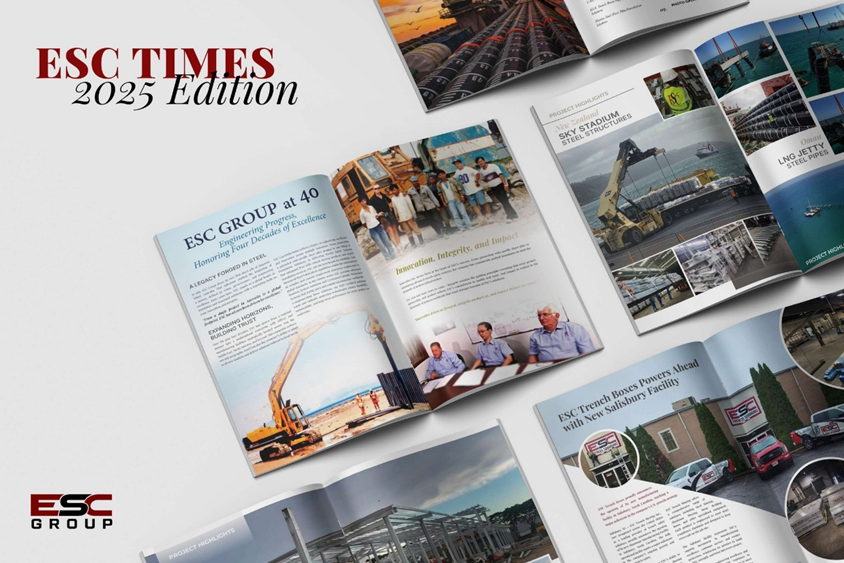Application of Structural Steel in Bridges
- May 26, 2021
- 4 min read
Updated: Jun 22, 2025
Steel bridges exist in significant numbers in every corner of the world. In the United States alone, more than 30% of the bridges are built with steel as the exclusive or major component. Steel bridges are not just strong, durable, and flexible, they are extremely beautiful. Many of them are popular as magnificent attractions, historical landmarks, ‘Nobel Prize’ winners, and valuable architectural masterpieces.
Structural steel as a solution to extensive bridge projects guarantees lighter and faster construction, innovative designs, socio-economic benefits, and positive environmental effects. As a versatile material, structural steel components can be fabricated into limitless formations to cater to all bridge types and designs. They can be basically arches, trapezoidal, helical, and more, or maybe in complicated shapes such as a knot, a serpentine torch, and other irregular figures. These materials possess the flexibility to create wonders like the stunning neo-futuristic steel structures we see around us nowadays. Vast application of structural steel is evident in different types of bridges as follows:

Designed primarily for function and efficiency, this type supports reinforced concrete deck slabs using steel ‘I-beams’ resting on abutments or piers at each end. There are two types of beam bridges: multi-girder, involving multiple steel beams; and ladder deck, consisting of two steel beams and intermediate bracings. They are suitable for highway bridges of medium span (13m to 100m). Recently constructed beam bridges have decks rigidly connected to the abutments for the purpose of eliminating expansion joints and bearings. Beam or stringer bridges are the simplest and do not consider aesthetics much.
Box Girder Bridges

This is a type of bridge with beams shaped like a hollow rectangular or trapezoidal box, also called the ‘box girder’. A box girder consists of two webs joined at the top and bottom by flanges; in some cases, it is closed at the top by the deck itself. They are usually built from pre-stressed concrete, structural steel, or a composite of steel and reinforced concrete. The cross-sectional configuration of a box girder is ideal for applications requiring good torsional stiffness, such as curved bridges and other difficult design cases. Box girder bridges are appropriate for spans of 100 to 200m using either a single box or more as required. When utilized for lengths of over 200m, they are likely to function as an integral part of a cable-stayed or suspension bridge. Photo credit: pinterest.co.uk
Truss Bridges

The load-bearing capacity of a truss bridge depends on the framework of its superstructure, composed of interconnected steel elements forming triangular units. The purposeful orientation of each individual steel member contributes to the efficiency of the truss to perform in tension, compression, or both as a result of dynamic loads. Trusses also serve as beams or components in composite decks, as arch bridge stringers, as cantilever beams, or as girders to cable-stayed bridges. They are widely applied in footbridges, demountable bridges, gantries, and railway bridges of over 50m span.
Arch Bridges

A ‘through arch bridge’ is also known as a ‘half-through arch bridge’ or ‘through-type arch bridge’. An arch structure, which can be a steel truss, plate box girder, steel I-beam, or reinforced concrete section, supports the bridge deck. The deck can be supported on struts, sit on top of the arch, or be suspended from the arch by tension cables. Steel arches act primarily in compression. Variation of this bridge type is the ‘tied-arch’ or ‘bow string arch bridge’. The deck hangs from the arch above it and acts as a tension tie. Arch bridges are well-suited to bridge wide waterways or wherever foundation works are difficult to construct or establish. Aside from being architecturally attractive, these bridges are relatively cheaper and flexible. Photo credit: en.wikipedia.org

Typical suspended bridges are built with two steel cables hung between two supports, forming a catenary. For short-span structures such as a footbridge, the steel cables are replaced with an alternative material, say an arch steel pipe. The bridge deck is suspended from these cables by a series of vertical high-tension wires along its length. All of the steel cables and hangers absorb tension forces. Suspension bridges are used as solutions for the longest spans. One of the most iconic examples of a suspension bridge is the famous Golden Gate Bridge of San Francisco, USA
Cable-stayed Bridges

A cable-stayed bridge involves towers or pylons where high-tension cables are anchored to support the deck girder at intervals. The cables or stays run directly from the tower throughout the center and both sides of the deck, resembling a fan-like pattern. This type of bridge is an optimum solution for spans longer than cantilever bridges but shorter than suspension bridges. Recent engineering advances have made it possible to extend the effectiveness of cable-stayed bridges up to spans of over 1 kilometer. The anchor towers, which can be in the form of an A-frame, H-frame, or column, work in compression. The deck girders sustain compression and bending stresses. Photo credit: en.wikipedia.org
ESC Group’s ESC Steel Structures division has a global supply capability of heavy structural steel bridge products. It is the ESC policy to fabricate and furnish clients with quality products to international standards. ESC has completed major bridge projects around the world and is an expert in steel bridge girder and arch fabrication.
The types of bridges within ESC's capabilities include:
· Steel highway bridges
· Railway Bridges
· Movable Bridges - eg, Bascule, Swing
· Heavy truss structures
· Multiple plate girders
· Trapezoidal box girders
· Suspension Bridges
· Steel Arch Bridges
· Temporary or Modular bridges
· Special Bridges
Other components that ESC can fabricate include:
· Handrails
· Steel columns
· Decking Formwork
· All types of bridge bearings
Should you have a requirement, you may contact our expert. Email us at info@escsteelstructures.com




.png)